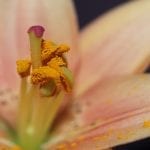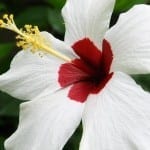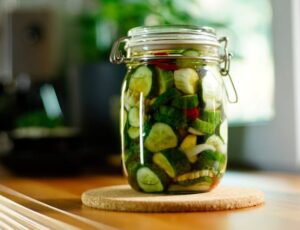
Clean the Air in Your Home by Growing Snake Plant
The snake plant is a member of the lily family. It is sometimes referred to as mother-in-law’s tongue or bowstring-hemp.
In addition to the plant’s attractive, deep green foliage, one of the top benefits of growing a snake plant is its ability to remove pollutants from indoor air. Here we cover how to grow and care for snake plants.
What are the health benefits of owning a snake plant?
According to a NASA report titled “Interior Landscape for Indoor Air Pollution Abatement,” the snake plant is proven to absorb indoor pollutants such as CO2, benzene, formaldehyde, xylene, and toluene from indoor air.
CO2 (Carbon Dioxide)
A 2015 study on the health effects of CO2 indicated that individuals who breathe elevated levels of CO2 could experience problems with cognitive skills, learning, and productivity. Nausea and dizziness may also occur.
The snake plant absorbs CO2 from the air. A study held at a Thailand university revealed that offices that contained 4 to 5 mature plants (Sansevieria trifasciata) had significantly reduced levels of CO2.
Benzene
Benzene is a common indoor pollutant due to a wide range of household products, including solvents, glues, paints, cigarette smoke, and heating and cooling systems. Breathing elevated levels of benzene can cause nausea, headaches, and stomach irritation.
Continuous exposure to benzene is believed to have harmful effects on bone marrow and may cause a drop in red blood cell count, leading to anemia.
Formaldehyde
Causes of formaldehyde in indoor air include cosmetics, paints, detergents, cigarette smoke, gas stoves, new laminate flooring, and wood products. Small amounts of formaldehyde usually do not pose a health risk but may irritate your nose, eyes, and throat.
Older adults, the very young, or people with asthma, allergies, or breathing problems may be more sensitive to formaldehyde. Continued exposure to high levels of this pollutant can lead to nose or throat cancers. In the NASA study, growing a snake plant notably lowered formaldehyde levels.
Xylene
Paint, varnish, paint thinners, paint removers, and pesticides often contain xylene. In small amounts, xylene can cause nose and throat irritation. In larger amounts, xylene can cause dizziness, nausea, headache, and vomiting.
Toluene
Toluene is present in paint solvents, plastic bottles, nail polish, glues, inks, and stain removers. Exposure to toluene can cause nausea, eye and sinus irritation, loss of coordination, insomnia, and dizziness.
Toluene may also cause developmental problems in children.
Trichloroethylene (TCE)
Trichloroethylene is present in varnishes, adhesives, lacquers, paint removers, and printing inks. Short-term exposure to low levels of TCE can irritate the upper respiratory tract system and cause nausea, fatigue, and headache.
Does the snake plant produce oxygen?
Another benefit of growing a snake plant is its ability to add much-needed oxygen to your indoor spaces. Most houseplants take in carbon dioxide and produce oxygen during the day.
The snake plant is unique as it converts CO2 (carbon dioxide) to O2 (oxygen) at night. This makes it an ideal plant for the bedroom.
Are there different types of snake plants?
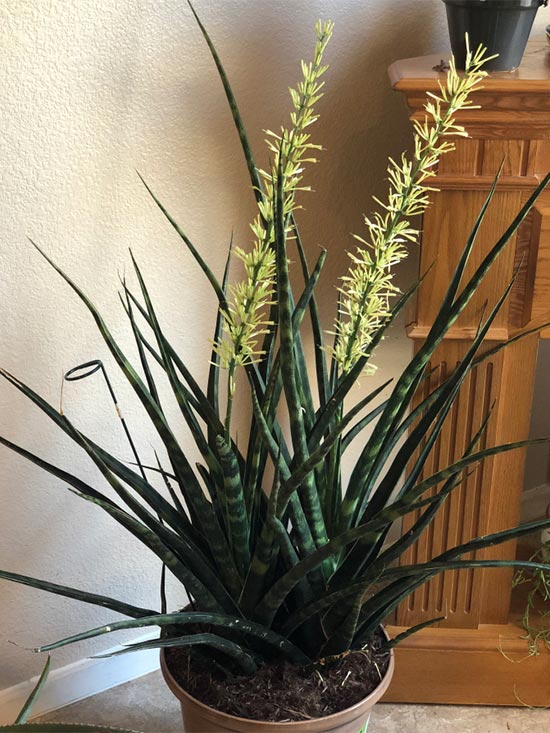
Most snake plant species have sturdy, sword-like leaves that stand upright. The snake plant is an evergreen native to the tropical areas of Africa, Asia, and Europe.
The foliage may be edged or banded in silver, gold, or gray colors. One of the most popular species is sansevieria trifasciata, often referred to as Mother-in-law’s tongue.
If you’re looking for a snake plant that’s a little different, here’s a list of popular houseplants sold at plant nurseries and garden centers.
African spear plant is a snake plant with light green, cylindrical spears and narrow, dark green stripes. African Spear Plants grow to 2 to 3 feet in height.
Rhino grass is a succulent with stiff, cylindrical, upright leaves tinted in red. Rhino grass is native to the Kalahari Desert in Africa, and these houseplants will grow to 12 inches in height.
Golden hahnii, or Golden bird’s nest, is a dwarf cultivar. These plants will grow in rosettes of short, grayish-green leaves with dark greens bands. The leaf borders are striped in cream-yellow.
Golden Hahnii blooms in summer or fall with fragrant, greenish-white flowers. It also matures to roughly 3 feet in height.
Bantel’s sensation or White snake plant is an eye-catching variety that will grow 3 feet in height. Bantel’s sensation is popular for its thin, slender leaves with white vertical stripes.
This snake plant species is native to West Africa. The light-colored foliage makes the plant less tolerant of low light conditions. Set the container in bright, indirect light.
Twisted sister is a dwarf cultivar with variegated leaves in bright gold and green hues. The foliage will ‘twist’ as the plants grow, giving each one of the plants a pleasing, random appearance.
The foliage has horizontally striped leaves variegated in yellow. Twisted Sister plants grow to approximately 14 inches in height.
How much sunlight does a snake plant require?
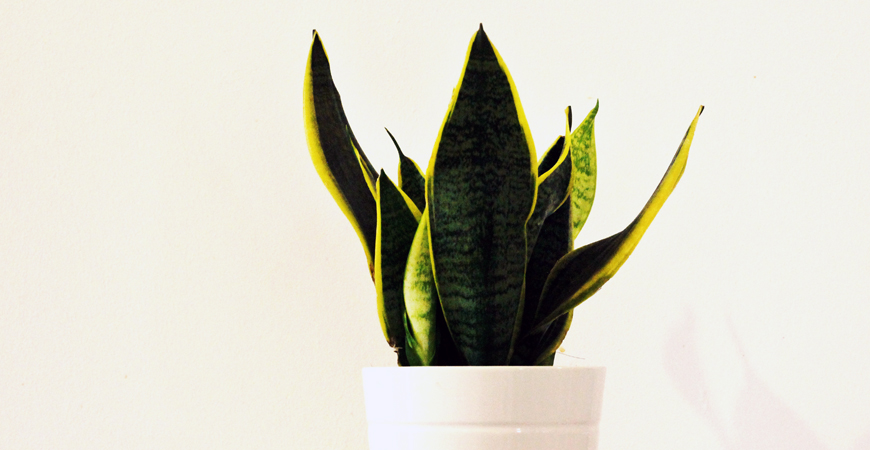
Snake plants are popular for their ability to adapt to a wide range of lighting conditions, from direct sun to low light. It’s best to place your snake plant where it will receive periods of bright light and shade during the day.
How often should I water the snake plant?
Water snake plants every 2 to 3 weeks from spring to fall to keep it growing. Also, keep the potting soil moist but not wet while you water your houseplants.
Add water when the potting soil feels dry to the touch. Do not give the snake plant more water than it needs as it may cause root rot in the potting soil.
When growing a snake plant in the winter, water the potting soil once a month. Dust the leaves to keep the leaves of your houseplants clean and healthy.
Does snake plants have any pests?
Yes. Snake plants are susceptible to spider mites and mealybugs. These insects suck the sap from the leaves, weakening each leaf and the overall plant.
Symptoms of insect damage on snake plants include small wounds and leaf drops—control mealybugs by dabbing insects with rubbing alcohol and rinsing the plant with water.
Remove spider mites by holding the plant and potting soil under running water to wash bugs down the drain. Insecticidal soap with water can also be used to control pests.
Snake plant is easy to grow, cleans the air, produces oxygen, and adds a new touch of green to any room in your home. What’s not to love about this one?




